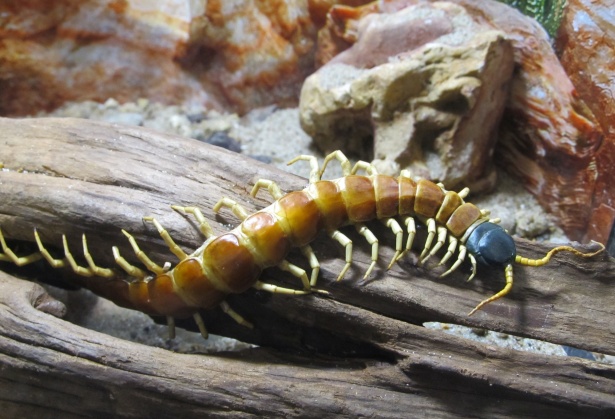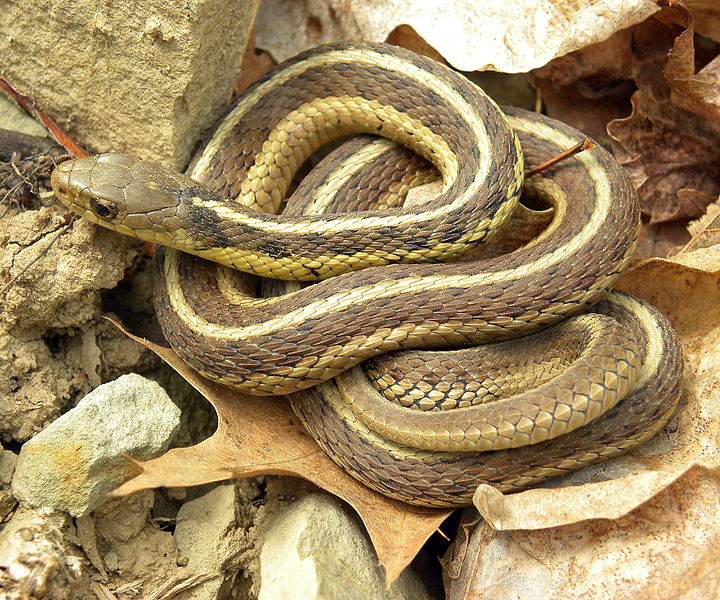
When someone hears the word ‘sorcery’, it conjures a figure holding a doll and needle mumbling words that can affect anyone under their power. Certain malignancy has always been associated with sorcery due to it being labeled as an ‘art of the devil’ and because its intricacies go beyond common understanding. As the famous fictional symbologist Robert Landon once said: we fear what we don’t understand.
Despite the fear, people remain drawn to it. In Philippine culture, sorcery is consistently spell bounding the imagination and at times making out hearts skip a beat.
Perhaps some are even curious to know what the different methods of a Philippine sorcerer are in casting his or her spells. If the worst comes to the worst, is there a way to counter it?
Before Casting Your Spell
There are two factors on how spells can be performed by a sorcerer: through the usage of certain agents or tools and to use a representation of their victim. Magical agents comes in the form of insects (popular are centipede and beetles), small animals, certain substances or small objects (e.g pins and needles). In other cases, certain objects will represent the victim as if there is link connecting them hence – what the sorcerer will do to this object will also happen to their victim. A good example is the usage of voodoo dolls, but it’s not just limited to that. Some would employ living animals to inflict harm on someone.
The following methods of sorcery will be divided into the above mentioned factors. The first three (Barang, Usik and Hilo) will be under those who need an agent, while the second part (Paktol, Laga and Sampal) are representation-based sorcery.
Barang: When Insect Bites Become Fatal
Barang is probably one of the most well-known methods of sorcery in the Philippines; wherein a sorcerer can cause harm by commanding his or her familiar (in the form of unusual insects or animals called ‘barang’) to invade someone’s body through their orifices.

One must note that the insects taken care of by the sorcerers who use the Barang method are not ordinary when it comes to their appearance. An example of this is when instead of six legs, they actually have an extra seventh leg on their body. These insects or animals are usually kept in a bamboo tube and most often used during Friday at noon during or near the last phase of the moon. The sorcerer will write the name of their victim on a piece of paper which will be put inside the bamboo tube. If the insect inside of it will eat the paper, then they are ready to heed the command of their owner.
Afterwards the sorcerer will dip a branch from the kalamongay plant inside the bamboo tube while saying: “Those who will obey my command may come up.” The insects who will climb the branch will be placed on a porcelain plate. The next step includes tying a white thread on the seventh leg of the insect while the sorcerer affirms the victim’s name, address, their description and what body parts the insects should inflict damage. Then the sorcerer will instruct them to return the next day at the exact time and to the exact place where they departed for their task.
The Barang can cause serious harm as they are able to target internal organs of their victims. The sorcerer can ensure the success of their assault when their familiars return and the white thread of their leg is stained with blood, showing they all came from the victim’s body.
Usik: Little Pieces of Death
Although not entirely specified, the Usik method shares a similarity with Barang as it employs insects or animals too. However, the difference lies with the incantations that are used and Usik’s use of much smaller insects. One type of Usik called Usik Daginut employs a more torturous way of causing pain by commanding small insects to live inside someone’s skin pores and hair follicles.

Another version of Usik uses tiny but sharp objects instead of insects to enter the bodies of their victims. These objects might include needles, grains of sand or fragments of broken glass, which all can cause serious lacerations and intense pain in the vital organs.
Hilo: Magical Poisoning
Hilo does not refer to the Filipino term for being dizzy or confused. Hilo in Cebuano is translated as “poison” and refers to a method that employs poison in a different fashion. A sorcerer who will use this method will first erect a makeshift altar of stones or branches in a secret or enchanted place. The sorcerer will then arrange blades in the altar in similar guise of the bamboo tree bagakai (Schizostachyum Dielsianum). After the preparation, the sorcerer will then call for the spirits, through prayer and offering, that they will send a snake to the altar.
The snake will then appear slithering on the blades, leaving its blood and poison on them. These will be collected by the sorcerer and mixed with concoctions from other poisonous or itchy plants and trees. The finished mixture can be utilized in different ways: it can be put into the drinks or food of the victim or poured on the hands of the sorcerer where they can introduce it to the body of their victim by mere touch.

The poison can also be applied indirectly to the victim. To do this, the sorcerer can bury it in the ground on a spot the victim usually walks upon. After stepping on it, the poison will enter the victim’s body causing bloody discharge.
Unfortunately, Hilo is an effective type of sorcery service that requires a high price to acquire. Before using this sorcery elsewhere, it must first used on any people living in the consignee’s house – such as their wife/husband or their children.
Paktol: Skulls and Dolls
Paktol uses dolls as the representation of the sorcerer’s victim. The preparation for this method starts with the sorcerer putting the doll under their first child during its baptism. A piece of paper with the name of the victim written on it will be pasted on the doll. The sorcerer will then mention the name while uttering the following: “Now you will suffer for what have you done to me” (or in other cases, the name of their client). Next the sorcerer will say the Cred prayer or Apostle’s Creed. When they reach the part that tells about the nailing of Jesus Christ to the cross, they will start pushing needles into specific body parts of the doll. That body part will correspond to the body parts of their victim and as long as the needle remains in there, the victim will receive pain..

To increase the pain, the sorcerer can push the needle deeper into the doll. They can also shift the needle to other parts. If it was decided, the sorcerer can push the needle through the body to kill the victim.
The second variant of Paktol involves the use of a skull from a person who is yet to be baptized. The sorcerer will conduct a ritual with the skull on a Friday at noon or eight in the evening. They will then give offering to a specific spirit to help them in the ritual. Some even say that the unbaptized spirit of the skull is the one who is called to torment the victim. The sorcerer will then take seven leaves from each of the following trees: mangungkong, kanomay and balanti. Seven leaves will be placed on the right, left and back side of the skull and a piece of paper where the name of the victim is written is placed in front of the skull. The leaves and paper are all tied in the skull with a black cloth or a band made from nito vine (Lygodium Circinnatum). Three wedges will also be made and inserted between the black cloth/ nito vine and the skull. Afterwards the sorcerer will create a club or rod made from the above mentioned tree.
When all is set, the sorcerer will start the ritual by commanding the spirit to kill the person written on the paper in front of the skull. They will then tap one of the wedges. He will repeat tapping each wedge while repeating this: “Now you are not a living person. You are among the dead and I have a command for you. Go to the person written there (pointing the piece of paper using the branch) and kill him.”
A total of seven taps on each wedge will be done by the sorcerer and if one of the black cloth or nito vines suddenly breaks, the victim will die instantly. The sorcerer can repeat the ritual once more and after two weeks, the victim will die by suffering with a severe headache.
Laga: A Boiling Curse
The Laga method requires the sorcerer to cook a variety of herbs, animal essence and any traces (i.e footprint), body excrement/parts (i.e hair or saliva) or possessions of the victim. Those that are taken from the victim should not be touched by the sorcerer, so implements are used to gather them. The sorcerer will wrap the above mentioned objects in the leaves of mangunkong, balanti or kanomay trees. The ritual must be done on Friday at noon or 8 in the evening. After calling the aid of spirits, the sorcerer will create a makeshift tripod from the branches of the mentioned trees. A pot will be placed atop of the tripod containing the wrapped specimen from the victim together with a special kind of poison called igdalaut, which was concocted at 3 in the afternoon on Good Friday.

Once all the ingredients are placed in the pot, the leaves from the three trees are used to cover the pot and will be fastened using nito vine wound 7 times around the pot. The fuel for the fire to boil the ingredients comes from the branches of the said trees plus the following: hagnonoy (Wedelia Biflora), alipata, sala (Lepidopetalum Perrottetii) and lagundi. The sorcerer will light the branches from the leaves of the 3 trees first mentioned and leave the concoction to boil. It must be ensured that all branches are consumed by the fire.
The victim of Laga can suffer from high fever, body swelling and even heart attack.
Sampal: The Sea Animal Curse
Sampal also have a similar procedure to Paktol but will utilize a small sea animal called bahagbahag. The sorcerer will bring any traces, body fluids or parts of the victim as representation, together with hairs of a dead woman to the sea to find a bahagbahag. The dead woman’s hair will be tied around the sea animal near its tail and will be placed in a basin. Using the branches from the mangunkong, kamonay and balanti, the sorcerer will make a pincer to hold the representation of the victim that is wrapped in leaves. Using the remaining branches, the sorcerer will open the mouth of the bahagbahag to insert the representation of the victim to the animal’s body. The mouth of the bahagbahag will be tied once more using the remaining hair of the dead woman. The bahagbahag will be returned to the sea where it is tied to a rock or stick to keep it in place.

The effects of Sampal to the victim includes enlargement of their stomach during high tide ,accompanied with severe stomach ache until the body of the victim will burst. To quicken the death of the victim, the sorcerer can just place the bahagbahag at the shore and wait for it to die.

Countering Sorcery Methods
Like the methods to inflict harm on someone, there are also several methods to fight back sorcery and to cure the victim. At times the sorcery can also be returned back to the sorcerer themself. This is what they call Balisung.
One of the methods for counter-sorcery includes using the shavings from the balikbalik tree rubbed around the victim’s body. Afterwards, these shavings will be divided into two piles wherein each is wrapped in the leaves of the badyang plant. One will be buried in the ground under branches from the mangungkong, kamomay and balanti that will be burned atop. The other pile will be carried to the sea. The one who carries this pile must be careful not to meet anyone along the way. Upon reaching the sea, the carrier will have to go in the area where the sea reaches their chin. On this spot they will bury the pile in the sand.
When all conditions are met above, the sorcery will return back to the one who cast it.
For anti-Barang sorcery, a mananambal or healer must first take all the insects from inside the body of the victim. He will then wrap them in black cloth and place them in a pot with water and the sap from the badyang (Alocasia Macrorhiza), alipata (Exoecaria Agallocha), gusoguso (Euphorbia Tirucalli) and sorosoro ( Euphorbia Neriifolia) trees, along with 7 pieces of balikbalim tree. It must be noted that the sap must be taken from the east side of the plants and trees. The pot will be then covered with leaves from the gabi plant and boiled using the branches of balikbalik, mangungkong, kamonay and balanti as fuel.
When all the fuels are consumed, the Barang will eventually return to the sorcerer.
A method called Dapo is specifically used for Usikan wherein it was done using a boiled coconut oil mixed with 21 slices of the plant called badiang, wrapped in black cloth and passed or rubbed on the affected body parts while an oracion is being uttered. When the black cloth is opened, the objects used in Usikan (sand grains or needles) will be found inside of it.

Final Words of Warning
Sorcery and magic has been around since the earliest people walked the Earth. The paintings on cave walls depicting the hunter killing his game is considered by some a primitive form of magic through visualization; creating the desired image in the hunter’s mind in order for it to happen. Along the evolution of man and its culture, sorcery has developed from crude paintings to complex systematic knowledge and practice of the supernatural.
Sorcery in Philippines is ordinarily viewed as having a pact with evil spirits similar to the perception of the west when it comes to occult. However, there are instances that these sorcerers are also taking the role of a healer and will only use the dark side of sorcery when they are assured that the one whom they will inflict harm on is guilty of crimes or sins they are accused of. This is why some will explain that sorcery will never work on someone who is innocent, or who doesn’t commit any wrongdoing on the individual asking for the sorcerer’s help. This shows that sorcery in the perceptions of some practitioners in the Philippines is integrated in the dualistic force of good and evil.
Though we are familiar with the concept of black and white magic, perhaps like anything in this world, sorcery or magic in its natural sense is not inherently evil nor good; and its outcome is dependent upon the people who use it.
Sources:
Encyclopedia of Philippine Folk Beliefs and Customs by Fr. Francisco Demetrio, S.J (1991)
Cebuano Sorcery: Malign Magic in the Philippines by Richard Lieban (1967)
ALSO READ: Shamans, Witches and Philippine Society
Currently collecting books (fiction and non-fiction) involving Philippine mythology and folklore. His favorite lower mythological creature is the Bakunawa because he too is curious what the moon or sun taste like.


